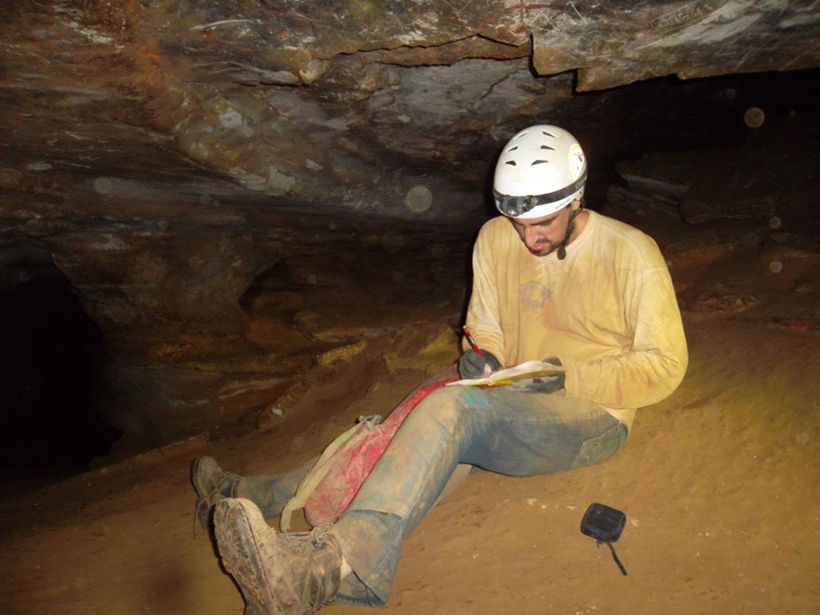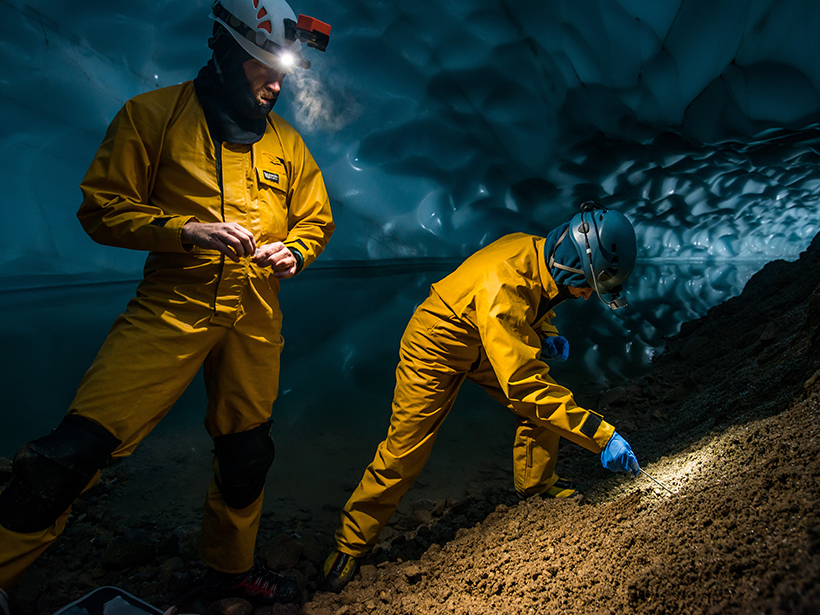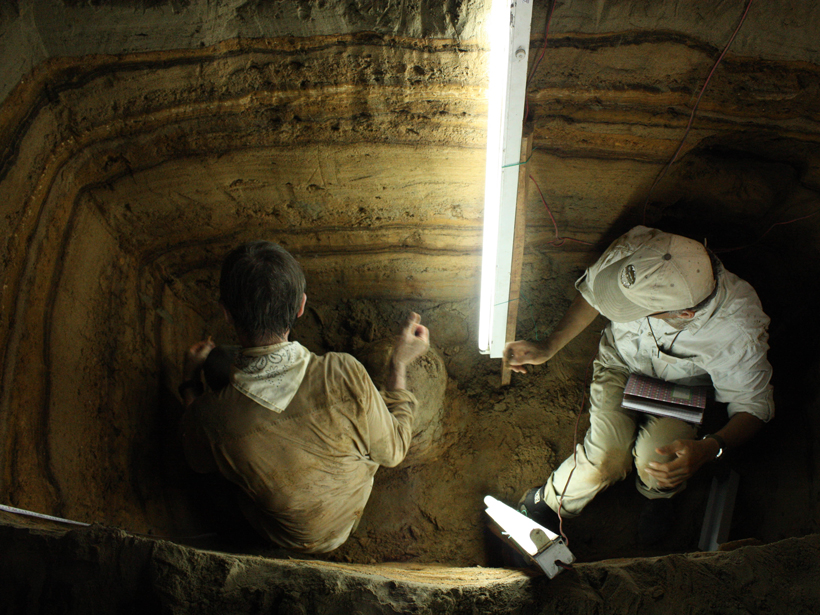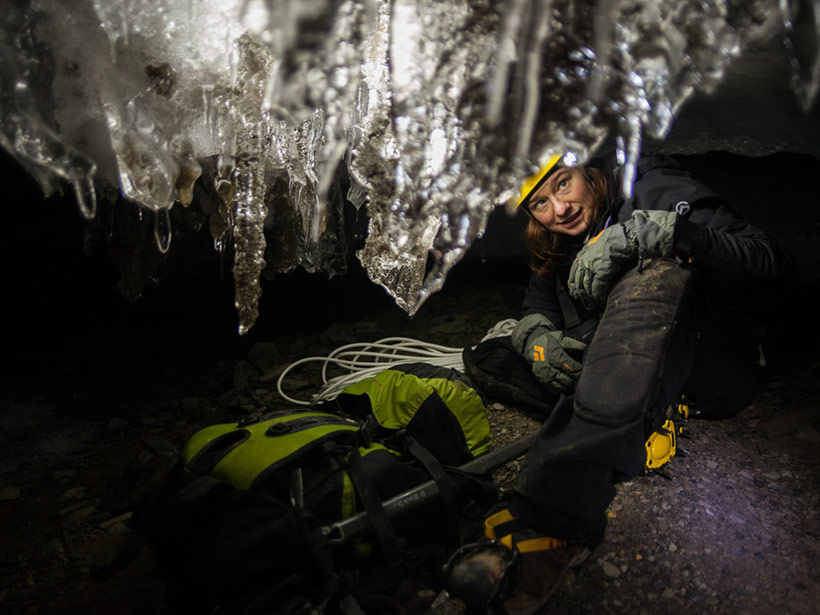Sediments dug up from sea caves help reconstruct past climate, contributing to better storm predictions.
caves
How Ice Rafting Events Affect Asian Monsoon Hydroclimate
Cave stalagmites provide isotopic evidence that Bond events and Heinrich events have more variable effects on Asian monsoon hydroclimate during the last glacial period than during the Holocene.
Some Caves Remove Methane from the Atmosphere, New Tests Reveal
Isotopic signatures pinpoint the sinks and surprising sources of methane in widespread karst caves. Researchers suggest that this type of cave globally removes more methane than it produces.
Ice Caves atop a Volcano Give Taste of Otherworldly Science
Researchers brave perils and tumbling trash to probe glacial caves on Mount Rainier, improving their understanding of its extraordinary environment and helping to advance space exploration.
Indonesian Cave Reveals Nearly 5,000 Years of Tsunamis
Researchers explore a coastal cave containing layers of sand deposited by 11 prehistoric tsunamis and demonstrate that the time period between massive waves is highly variable.
Lunar Lava Tubes Could Offer Future Moon Explorers a Safe Haven
Scientists find evidence that a 50-meter-deep pit on the Moon's surface could be a skylight opening to an intact lava tube tens of kilometers long.
Subterranean Caverns Hold Clues to Past Droughts
Cave formations offer highly resolved paleoclimate data that scientists plan to use to reconstruct California's ancient patterns of drought.
Into the Belly of a Glacier
Ice caving started as a weekend hobby but has now blossomed into a portion of graduate student Kiya Riverman's Ph.D. research.
Planetary Caves' Role in Astronaut Bases and the Search for Life
2nd International Planetary Caves Conference; Flagstaff, Arizona, 20–23 October 2015
Laser Beams Brighten Prospects for Cave Science
Armed with laser technology, scientists now plot and study vivid maps of underground spaces with stunning accuracy. But the equipment is costly, fragile, and hard to maneuver through tight passages.










